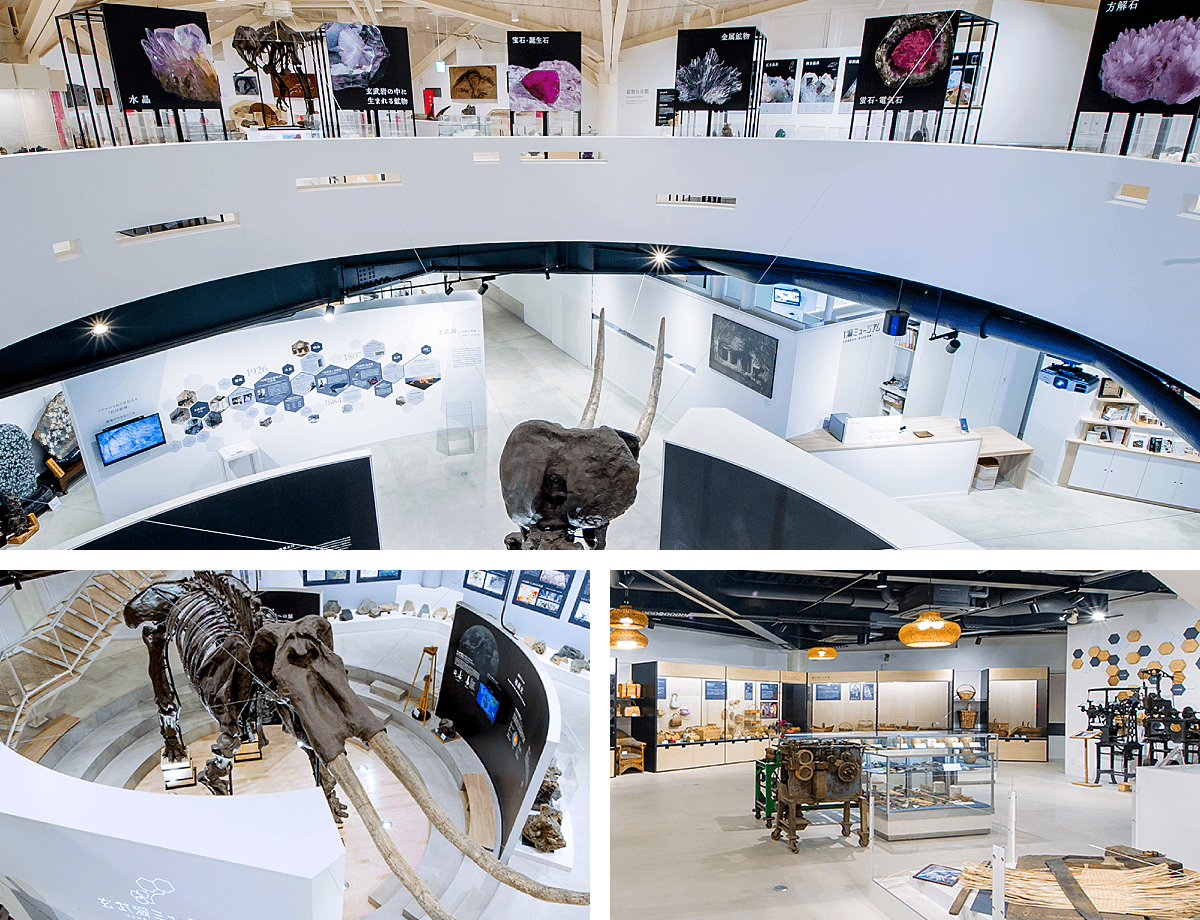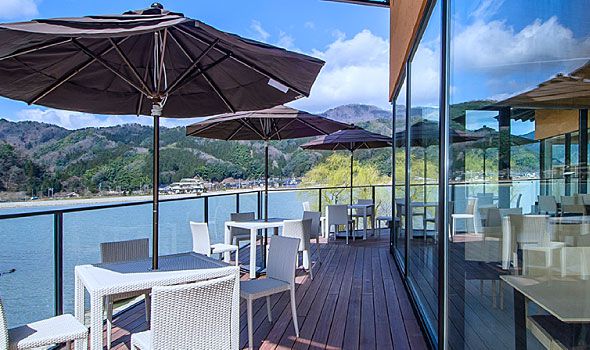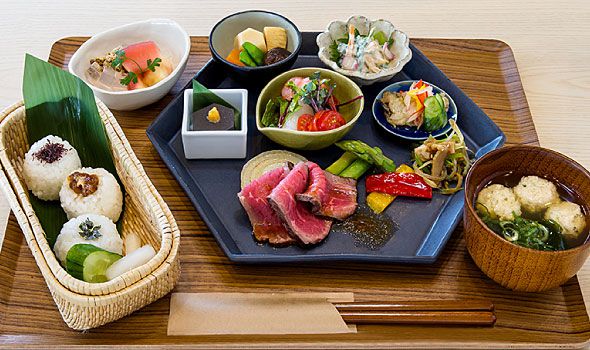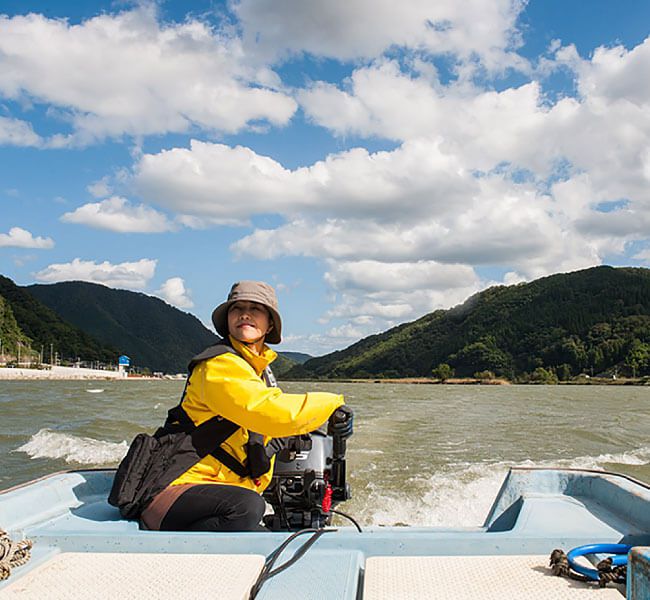Genbudo Museum
Genbudo Museum is located at the entrance of Genbudo Park, a designated national natural treasure.
On the first floor is a weaving exhibit where guests can learn about Willow Craft, Toyooka’s traditional art of weaving that has a history of 1,200 years.
As one wanders the first floor they will also find themselves face to face with an Stegodon fossil, ancient animals which once roamed the region.
On the second floor there are exhibits covering beautiful and fascinating minerals and rocks as well as fossils including that of a t-rex.
Museum Cafe
At the museum cafe, seasonal items made with local ingredients are on the menu including Stork Natural Rice.
The outdoor terrace offers a beautiful panoramic view over the Maruyama River and the surrounding mountains.
Access
While Genbudo does technically have its own train station and therefore is accessible by train (to a point) there is just one small catch. The big river that separates the station and the park.
But worry not! For visitors that are coming by train, a boat can be called for pick up.
Before riding the train please first call the museum and let them know of your estimated arrival time at Genbudo Station.
The boat fare is 900 yen for adults, 500 yen for children, and 300 yen for infants round trip. Please note that the boat may not operate during bad weather.
Other options for accessing Genbudo Museum and Park include taxi, rental car, and rental cycles.
Information listed below was last updated 07/2025 and is subject to change.Contact the business directly for updated information. Note, most businesses can only speak Japanese.
BUSINESS INFORMATION
- Business Name
- Genbudo Museum
- Business Hours
- 9:00~17:00
- Telephone
- 0796-23-3821
- Homepage
- https://genbudo-museum.jp/en/
- Average Price Range
-
General Admission (Museum)
Adults (age 13+) 800 yen
Children (age 6-12) 500 yen
Infants (3-6, preschool age, must be accompanied by an adult) 400 yen
Boat from Genbudo Sta.
One-way fare:
Adults (age 13+) 500 yen
Children (age 6-12) 300 yen
Infants (age 1-preschool age) 200 yen
Round trip:
Adults (age 13+) 900 yen
Children (age 6-12) 500 yen
Infants (age 1-preschool age) 300 yen
(Operates 9:00 - 17:00)
- Language Support
-
Limited availability of English speaking staff
OTHER
- Parking
- Free parking
- Service Charges
- Free luggage storage for those entering the Genbudo Museum.





Genbudo Museum houses a collection of rare minerals and precious stones as well as fossils that include a T-rex, Pterosaur, and Stegodon.